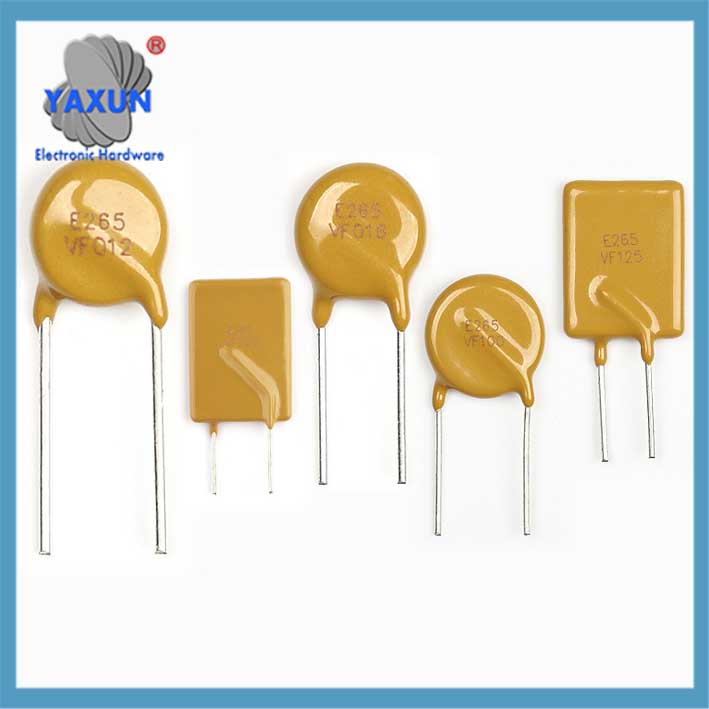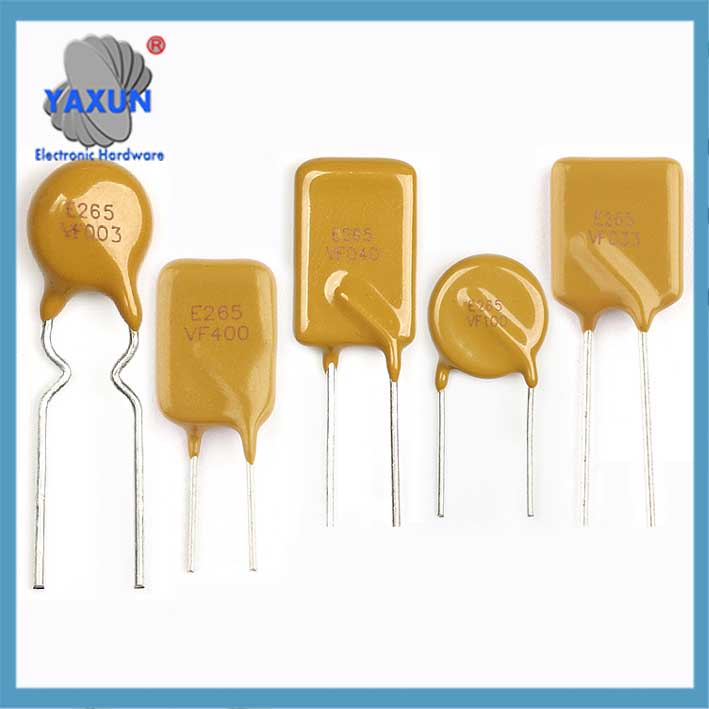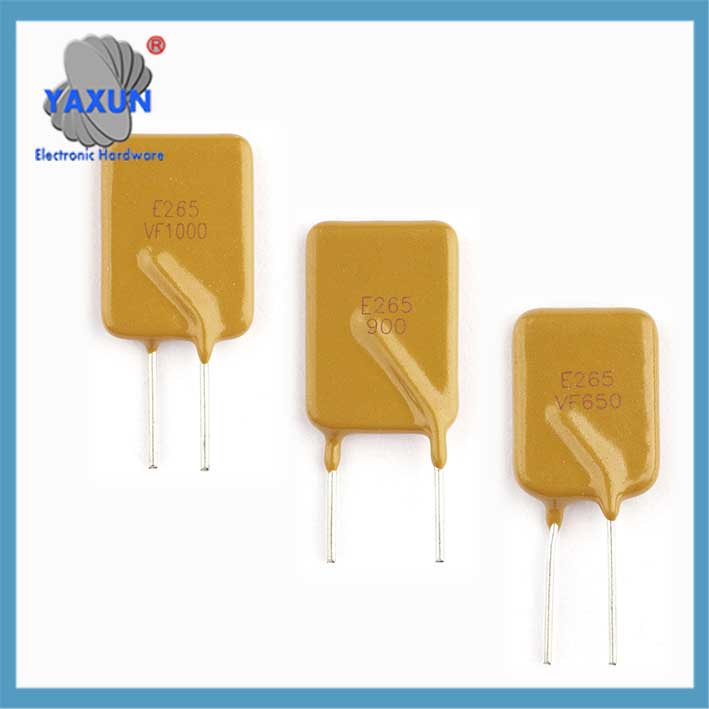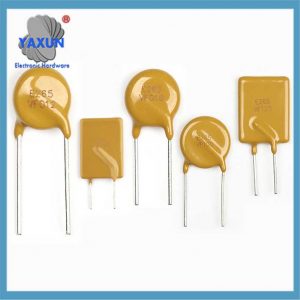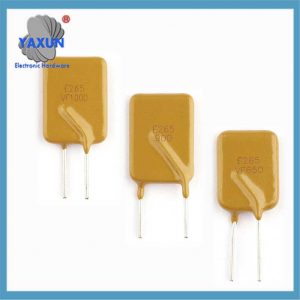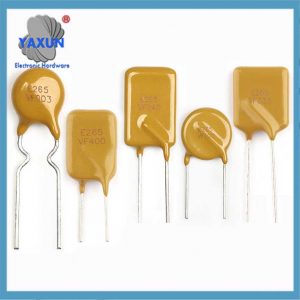ürün kategorileri
- termal sigorta 32
- yüzeye monte sigortalar 12
- termistör 36
- PCB Montajlı Sigorta Tutucu 27
- Kablo demeti 6
- Bıçak Sigorta Tutucuları 17
- termostat 50
- Elektrik sigortası 24
- Otomotiv sıcaklık sensörü 7
- Termal Devre Kesici 22
- Sigorta kutusu tutucusu 36
- Sıcaklık sensörü 75
- Isı anahtarı 68
- Araba Sigortası 20
- Cıvatalı Sigortalar 8
Ürün Etiketleri
Çin'in yerleşim sigortalarının Çin üreticisi
Sıfırlanabilir bir sigorta polimer pozitif sıcaklık katsayısından yapılmıştır (PTC) malzeme. Aşırı akım veya kısa devre durumunda devreyi otomatik olarak keser. Devre arızası çözüldükten sonra, iletimi otomatik olarak geri yükler, manuel sigorta değiştirme ihtiyacını ortadan kaldırır.
Sıfırlanabilir sigorta (Pptc) otomatik sıfırlama fonksiyonuna sahip bir aşırı akım koruma bileşenidir. Yüksek moleküllü polimer ve iletken parçacıkların birleşiminden yapılmıştır, Bir devre anormalliği oluştuğunda akımı hızlı bir şekilde keser ve arıza çözüldükten sonra iletimi otomatik olarak geri yükler. Temel özellikleri ve çalışma prensipleri aşağıdadır:
BEN. Sıfırlanabilir Sigortanın Çalışma Prensibi
Sıfırlanabilir bir sigorta polimer pozitif sıcaklık katsayısından yapılmıştır (PTC) malzeme. Aşırı akım veya kısa devre durumunda devreyi otomatik olarak keser. Devre arızası çözüldükten sonra, iletimi otomatik olarak geri yükler, manuel sigorta değiştirme ihtiyacını ortadan kaldırır.
Sıfırlanabilir sigorta nasıl çalışır?: Malzemenin PTC özelliklerinin kullanılması, oda sıcaklığında nispeten düşük bir direnci korur (25°C), genellikle daha az 1 ohm. İçinden geçen akım arttığında ve malzemenin nominal akımını aştığında, sıcaklığın yükselmesine neden oluyor, direnci hızla megohm seviyesine yükselir. Bu noktada, içinden geçen akım çok düşük, açık devreye benzer, böylece sonraki devreleri korur. Devre yükü normale döndüğünde, PTC malzemenin direnci normal değerinin altına düşer, ve sıfırlanabilir sigorta iletime geri döner, devrenin normal çalışmaya devam etmesine izin vermek. Normal Durum: İletken parçacıklar düşük dirençli bir yol oluşturur (tipik olarak <1Ah) polimerin içinde, istikrarlı bir akım akışına izin vermek.
Aşırı Akım/Aşırı Isınma Tetikleyicisi: Anormal akım akışı sıcaklık artışına neden olur, polimerin genişlemesine ve iletken ağı kırmasına neden olur, megaohm aralığına karşı dirençte ani bir artışa ve akım sınırlamasına neden olur.
Otomatik Kurtarma: Arıza giderildikten sonra, polimer soğur ve büzülür, iletken parçacıkların yeniden bağlanmasına ve düşük dirençli duruma dönmesine izin verir.
II. Temel Özellikler
Otomatik Kurtarma: Manuel değiştirmeye gerek kalmadan binlerce tekrarlanabilir koruma döngüsü sağlar.
Çift Koruma: Hem aşırı akıma hem de aşırı ısınmaya yanıt verir (ortam sıcaklığı açma eşiğini etkiler).
Hızlı Yanıt: Milisaniye seviyesinde yolculuk süresi, arıza akımı yoğunluğuyla ters orantılı.
Güvenilirlik: Tek kullanımlık sigortalardan daha güvenilirdir ve birden çok kez kullanılabilir.
III. Türler ve Parametreler
Paket Çeşitleri:
Açık delik (radyal kablolar) ve yüzeye monte cihazlar (SMD, örneğin 0805 Ve 1206). Temel Parametreler:
Akım Tutma (Ihold): 25°C'de sürekli olarak akabilecek maksimum akım.
Açma Akımı (Itrip): Korumayı tetikleyen minimum akım.
Dayanım Gerilimi (Vmax): Sıfırlanabilir bir sigortanın koruma modunda dayanabileceği maksimum voltaj.
Ihold: Nominal akım olarak da bilinir, bu, sıfırlanabilir bir sigortanın 25°C'de sürekli olarak akabileceği maksimum çalışma akımıdır. Bu akımın altında, sigorta düşük direnci korur. (Ayrıca, çalışma sıcaklığının Ihold üzerindeki etkisi dikkate alınmalıdır.)
Sıcaklık 25°C'nin altına düştüğünde, Tutma artar, çalışma sıcaklığı arttıkça, Tutma azalır. Sıfırlanabilir sigortalar kullanarak devreleri tasarlarken, çalışma sıcaklığı dikkate alınmalıdır.
Sıfırlanabilir bir sigorta seçerken, Ihold akımının devredeki maksimum yük akımından büyük olduğundan emin olun, ancak devrenin veya cihazın nominal yükünü aşmayan.
Itrip: Açma akımı olarak da bilinir, bu, sıfırlanabilir bir sigortanın direncinin 25°C'de artmaya başladığı minimum akımdır. Bu, sıfırlanabilir sigortanın çalışmaya başladığı akım eşiğidir. Akım I açma akımını aştığında, sigorta yüksek direnç durumuna girer, devrenin bağlantısını kesme. Bu I açma noktası, PPTC direncinin düşükten yükseğe değiştiği geçiş noktasıdır.
3. Vmax: Nominal gerilim olarak da bilinir, bu, sigortanın 25°C'de dayanabileceği maksimum voltajdır. Nominal voltajın devredeki maksimum voltajdan büyük veya ona eşit olduğundan emin olun, aşağı devre kısa devre yaptığında güç kaynağındaki voltaj düşüşü sigortaya uygulanacağından.
4. Çalışma Süresi: Bu, sigorta direncinin maksimum değerine ulaşması için gereken süredir. 5 25°C'de tuttuğum zamanlar. The “Zaman” Tabloda 1 çalışma zamanı, saniyelerle ifade edilen.
IV. Tipik Uygulamalar
Aşırı akım koruması: İletişim ekipmanı, pil paketleri, LED sürücüleri.
Ters Polarite Koruması: Güç girişi bağlantı noktaları.
Aşırı Gerilim Koruması: Sinyal hatları veya hassas devreler.
V. Sıfırlanabilir Sigortalar için Ortak Devreler
1. Güç Aşırı Akım Koruma Devresi
Sıfırlanabilir bir sigortayı güç hattı girişine seri olarak bağlayın. Nominal akım aşılırsa, sigorta atacak. (Şekil 3.)
2. PCB Çıkış Arayüzleri
Örneğin, bir USB bağlantı noktası için, Çıkış gücünü korumak için bir PPTC'yi güç pinine seri olarak bağlayın.
3. Güç Ters Polarite Koruma Devresi
Devre ters polarite olduğunda, sıfırlanabilir sigortadan akan akım yüksek, direncini arttırmak ve devreyi kesmek, sonraki devreleri korumak.
4. IO Koruma Devresi
Sıfırlanabilir bir sigortayı IO sinyal hattına seri olarak bağlayın ve, TVS diyot ile birlikte, kontrol çipinde aşırı gerilim hasarını önleyin.
VI. Seçim Önemli Noktaları
Devrenin çalışma voltajına göre bir devre seçin, ortam sıcaklığı, anma akımı, ve çalışma süresi eğrisi. Örneğin, 48V'luk bir devre, 60V veya daha yüksek dayanım voltajına sahip bir model gerektirir. Yüksek sıcaklıktaki ortamlar için akım azalması dikkate alınmalıdır. Bir güç kaynağı aşırı akım koruması gerektirir. Çalışma voltajı 24V, maksimum çalışma akımı 450mA, ve maksimum çalışma sıcaklığı 50°C'dir.. 1,4A'da koruma gereklidir, ve devre 5A'da 1 saniye içinde korunmalıdır.
Birinci, çünkü güç kaynağı 24V, güç kaynağının Vmax'ı 24V'tan büyük olmalıdır, biraz marjla. Öyleyse, beş bileşen bu gereksinimi karşılıyor.
Saniye, çünkü devrenin maksimum çalışma sıcaklığı 50°C'dir, I hold değeri yaklaşık olmalıdır 80% gerçek nominal değerin. Öyleyse, SMD2920P075TF ve SMD2920P100TF bu gereksinimi karşılamaktadır, sahip olduğum gerekli değeri aşan = 0.45/0.8 = 0,56A. Üçüncü, çalışma süresi: Akım 5A olduğunda, SMD2920P075TF ve SMD2920P100TF 1 saniyeden daha kısa sürede çalışır. Fakat, daha hızlı aşırı akım koruması için, daha kısa çalışma süresi nedeniyle genellikle SMD2920P075TF'yi öneriyoruz.
Yaxun Electronics küresel tescilli SMD ve eklenti PPTC'ler sunuyor.
SMD ürünleri SMD0603P'yi içerir, SMD0805, SMD1206P, SMD1210P, SMD1812P, SMD2018P, ve SMD2920P serisi.
Takılabilir ürünler arasında HL06 bulunur, HL16, HL30, HL60, HL130, HL250, ve HL600 serisi.
Yaxun Electronics, EMC uyumlu sıfırlanabilir sigorta tasarımı hizmetlerinde uzmandır ve ücretsiz laboratuvar testleri sunar.
Bize Ulaşın
E-postanızı bekliyorum, size içinde cevap vereceğiz 12 ihtiyaç duyduğunuz değerli bilgilerle saatler.
 English
English Afrikaans
Afrikaans العربية
العربية বাংলা
বাংলা bosanski jezik
bosanski jezik Български
Български Català
Català 粤语
粤语 中文(简体)
中文(简体) 中文(漢字)
中文(漢字) Hrvatski
Hrvatski Čeština
Čeština Nederlands
Nederlands Eesti keel
Eesti keel Suomi
Suomi Français
Français Deutsch
Deutsch Ελληνικά
Ελληνικά हिन्दी; हिंदी
हिन्दी; हिंदी Magyar
Magyar Bahasa Indonesia
Bahasa Indonesia Italiano
Italiano 日本語
日本語 한국어
한국어 Latviešu valoda
Latviešu valoda Lietuvių kalba
Lietuvių kalba македонски јазик
македонски јазик Bahasa Melayu
Bahasa Melayu Norsk
Norsk پارسی
پارسی Polski
Polski Português
Português Română
Română Русский
Русский Cрпски језик
Cрпски језик Slovenčina
Slovenčina Slovenščina
Slovenščina Español
Español Svenska
Svenska ภาษาไทย
ภาษาไทย Türkçe
Türkçe Українська
Українська اردو
اردو Tiếng Việt
Tiếng Việt
